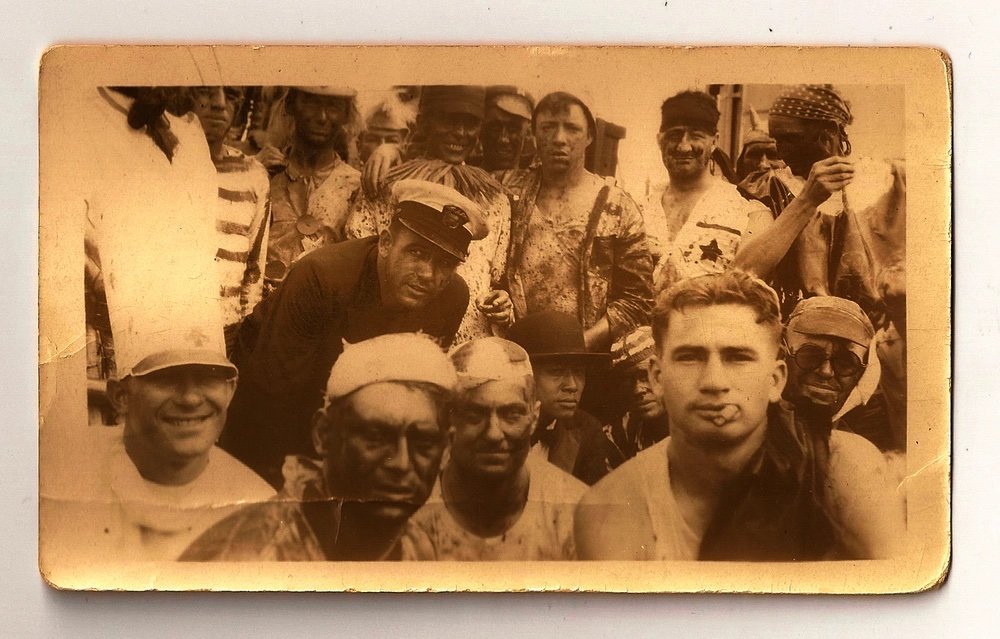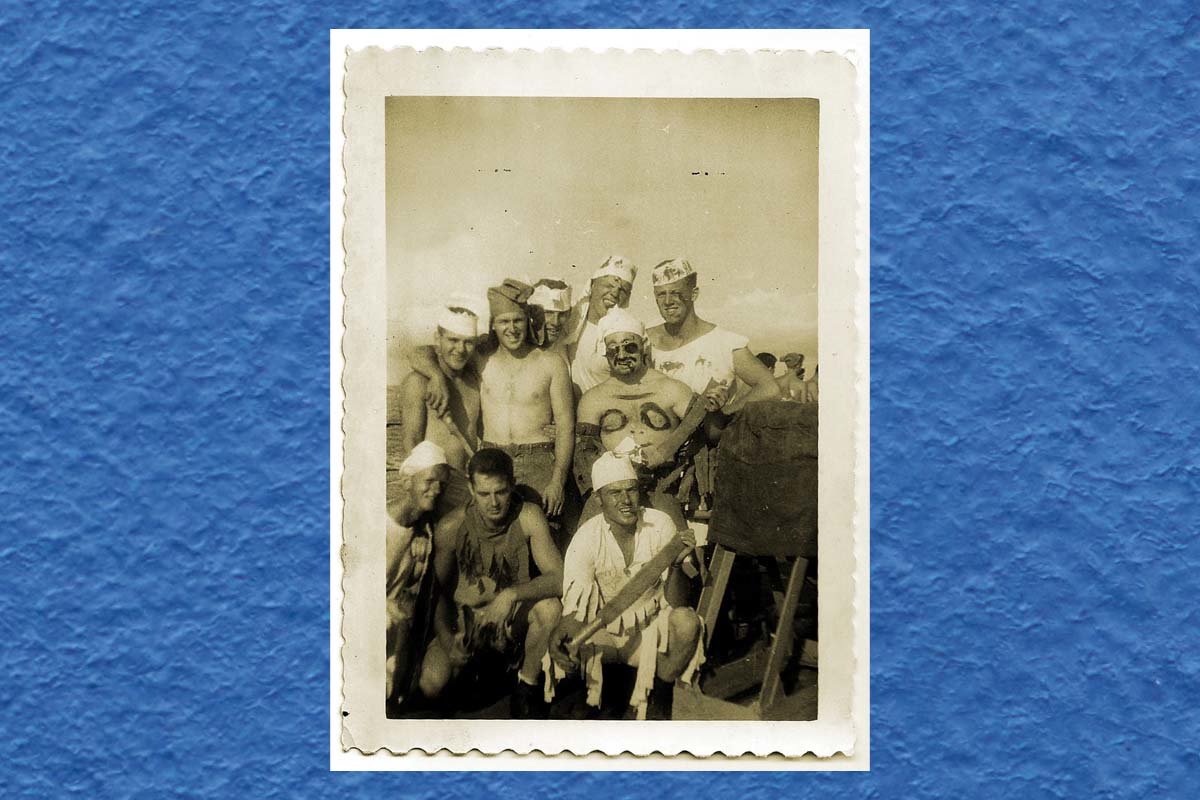What’s a Line Crossing Ceremony? How Sailors Get Weird When Crossing the Equator

“Shellback Royalty” aboard the Battleship USS Utah (BB-31) in 1928. US Army photograph by Master Sgt. Timothy Lawn/digitally re-touched courtesy of Martin Joseph Sullivan.
Ships find territory that folks on land can never even dream of seeing. Yet for sailors or members of navies across the world, it’s everyday scenery. However, they still have their own traditions while at sea, particularly with initiations or rites of passage.
The first time a sailor crosses the equator is one of their biggest traditions. The pomp and circumstance varies between branches, and even countries. But all agree this event is a big deal, one to be celebrated.
Take a look at the varied types of line-crossing ceremonies performed, and who gets to partake in them.

The line crossing ceremony and similar rituals started as a way to boost morale. Considered “folly” among soldiers, achieving this goal meant that new sailors had proven their ability to handle long or rough sailing conditions. At times, these line-crossing ceremonies turned dangerous, becoming a form of hazing, but in most cases, those practices have been outlawed.
The US Navy holds a massive, two-day line crossing ceremony wherein experienced sailors (those who have been across the equator) are called Shellbacks, Trusty Shellbacks and Honorable Shellbacks, the Sons of Neptune. Newbies are called Pollywogs, Slimy Pollywogs or Slimy Wogs.
Essentially, there is “controlled chaos” where Pollywogs must earn their spot as a Shellback. Pollywogs are made to work and perform physical tasks. Each ceremony varies from ship to ship, as it’s not an initiation recognized as the Navy as a whole.
Sailors finish the two-day event with “court,” where costumes abound and experienced sailors play various fictional parts, determining if newbies have earned their rite of passage.
At the end, sailors receive a certification, proving their new title. Some rare titles are included for those who cross at a specific area, for instance, a Golden Shellback for someone who crosses at the 180th meridian.

Most cruise liners boast a similar display, featuring King Neptune, the Roman God of Sea, and use the ceremony as a way to entertain their guests.
These fictional titles and/or organizations have been created to honor soldiers who pass into different areas of the world.
- The Star Spangled Shellbacks was used for those crossing the equator on July 4th, 1966. The crew was in the USS Franklin D. Roosevelt.
- The Iron Shellback are those on the USS Dwight D. Eisenhower and the USS San Jacinto who crossed the equator after a 200+ day voyage during the 2020 pandemic.
- The Order of the Ebony Shellback is for those who have crossed the Equator on Lake Victoria.
- The Emerald Shellback or Royal Diamond Shellback is for those who cross the Null Island, where the Equator crosses the Prime Meridian.
- The Golden Shellback is for sailors who have crossed the point where the Equator crosses the 180th meridian.
- The Top Secret Shellback is only for submariners who have crossed the equator at a classified degree of longitude.
- The Wooden Shellback is for sailors who have crossed the equator on a vessel with a wooden hull.
This article was originally published by We Are The Mighty. Read more by We Are The Mighty here.
Read Next: 5 Awesome Terms From The Days of Iron Men and Wooden Ships the Navy Needs to Resurface

Coffee or Die is Black Rifle Coffee Company’s online lifestyle magazine. Launched in June 2018, the magazine covers a variety of topics that generally focus on the people, places, or things that are interesting, entertaining, or informative to America’s coffee drinkers — often going to dangerous or austere locations to report those stories.
BRCC and Bad Moon Print Press team up for an exclusive, limited-edition T-shirt design!
BRCC partners with Team Room Design for an exclusive T-shirt release!
Thirty Seconds Out has partnered with BRCC for an exclusive shirt design invoking the God of Winter.
Lucas O'Hara of Grizzly Forge has teamed up with BRCC for a badass, exclusive Shirt Club T-shirt design featuring his most popular knife and tiomahawk.
Coffee or Die sits down with one of the graphic designers behind Black Rifle Coffee's signature look and vibe.
Biden will award the Medal of Honor to a Vietnam War Army helicopter pilot who risked his life to save a reconnaissance team from almost certain death.
Ever wonder how much Jack Mandaville would f*ck sh*t up if he went back in time? The American Revolution didn't even see him coming.
A nearly 200-year-old West Point time capsule that at first appeared to yield little more than dust contains hidden treasure, the US Military Academy said.












